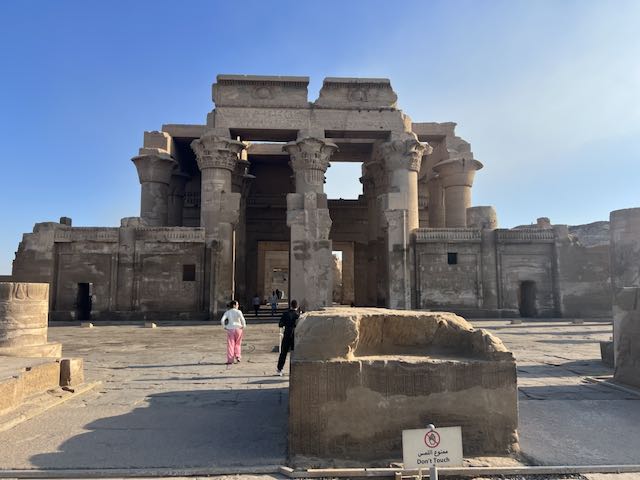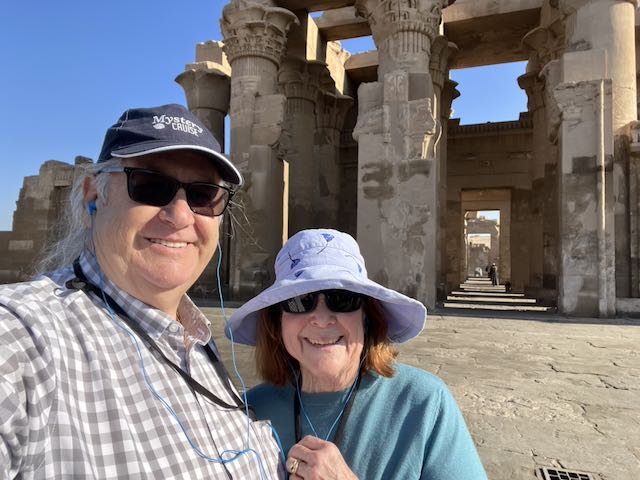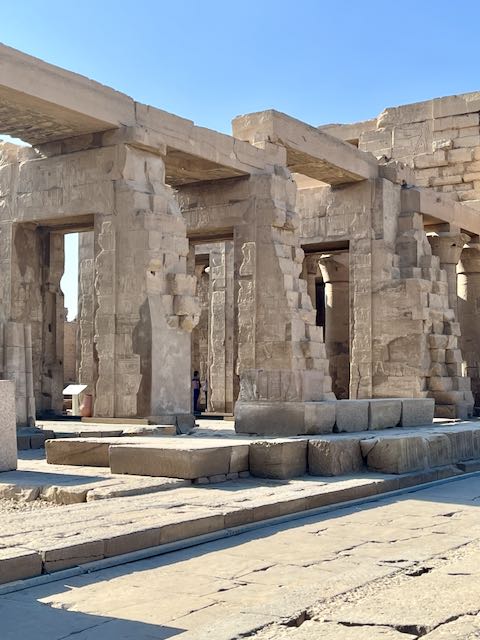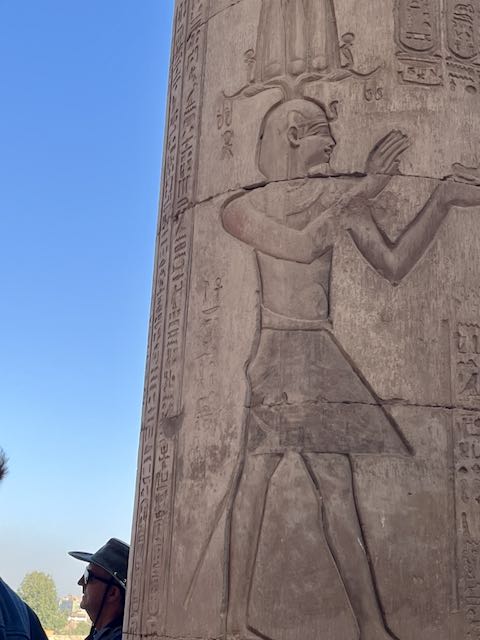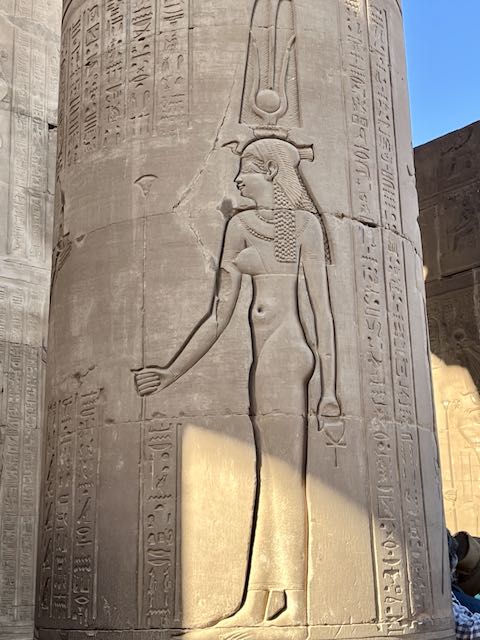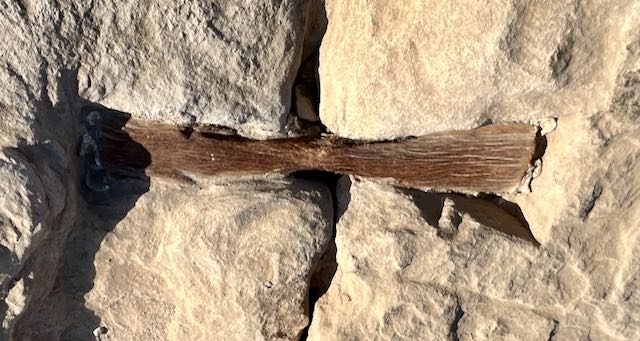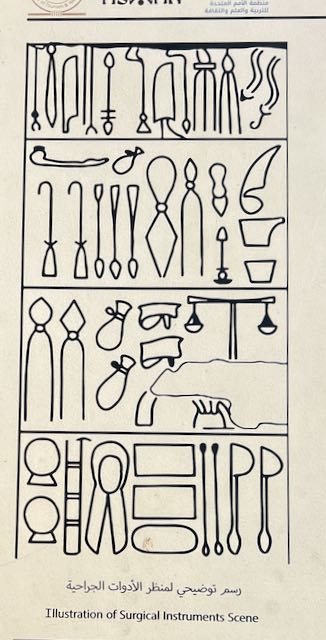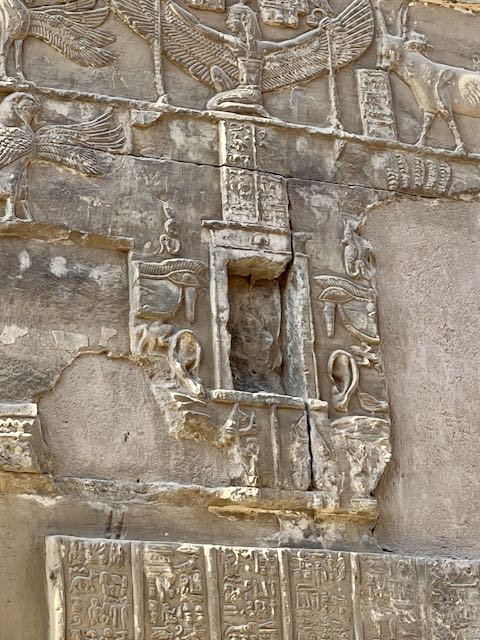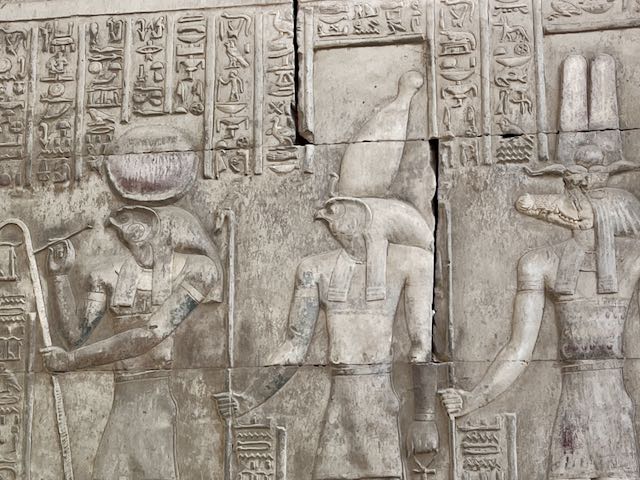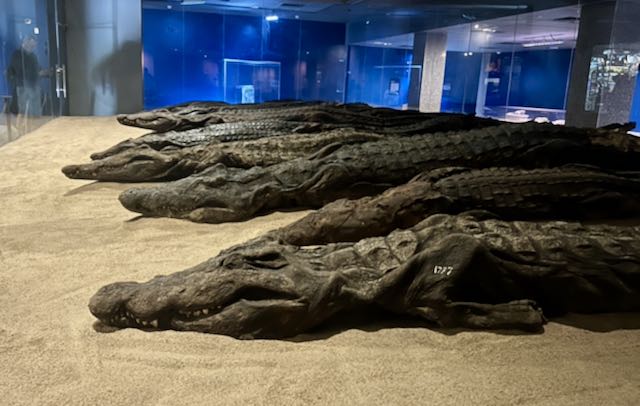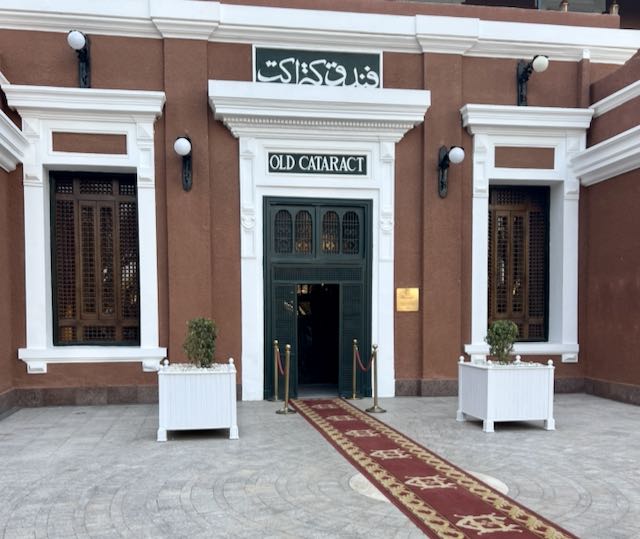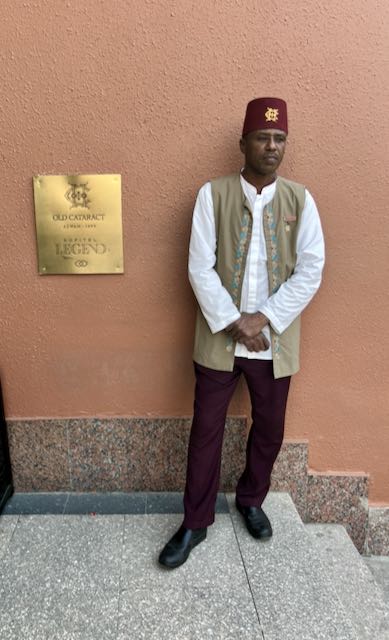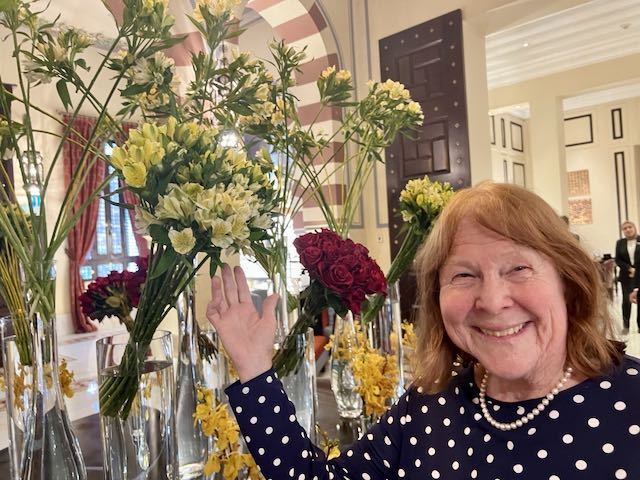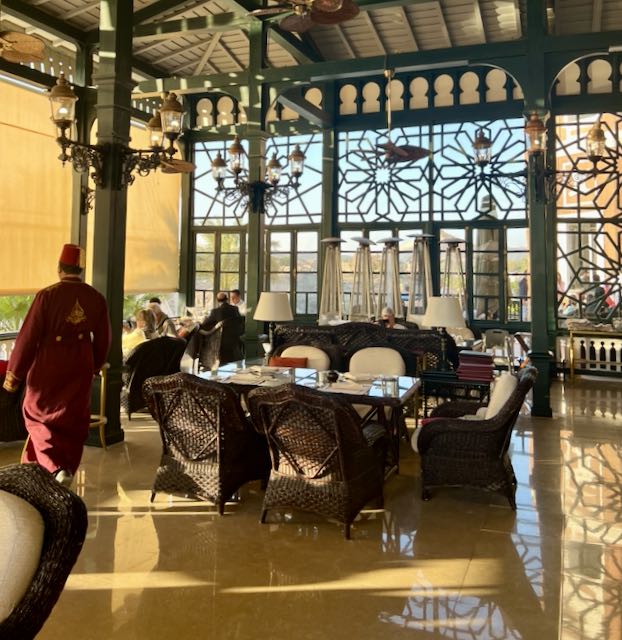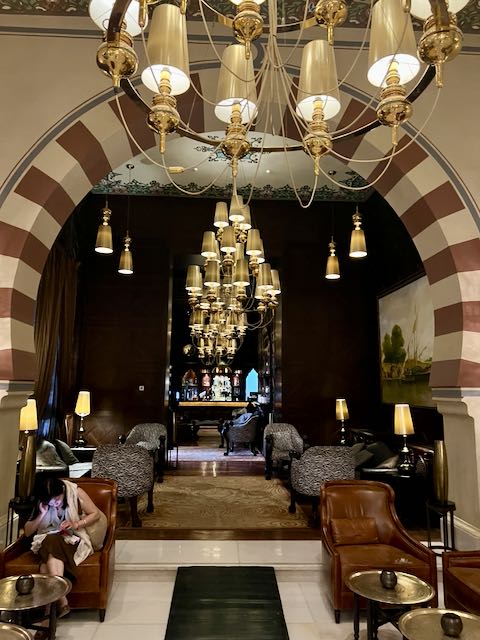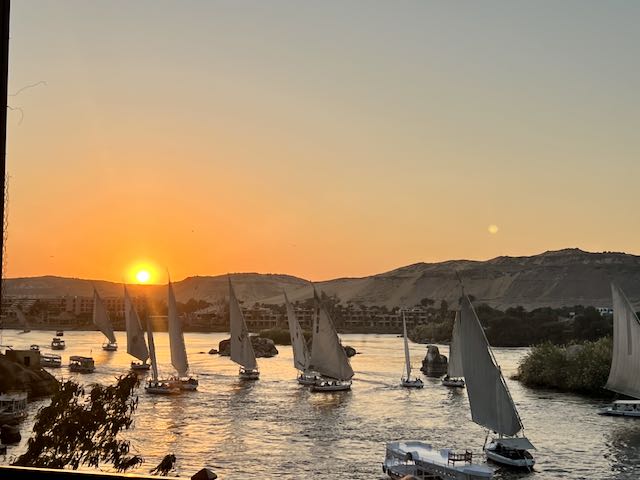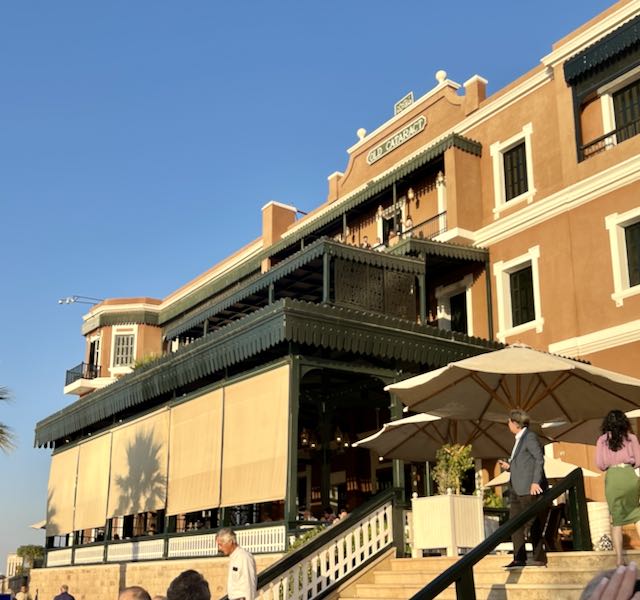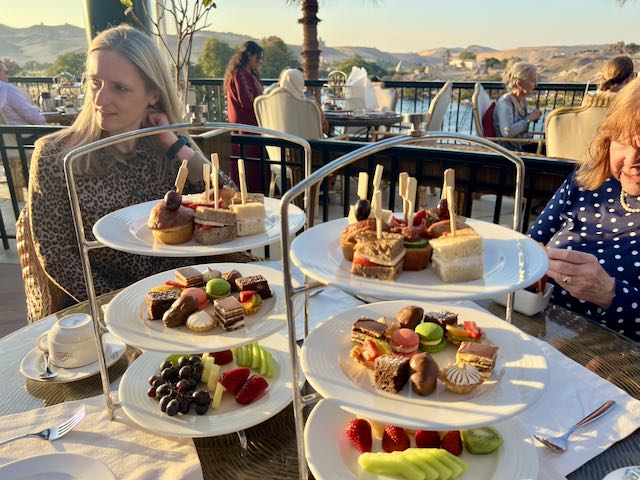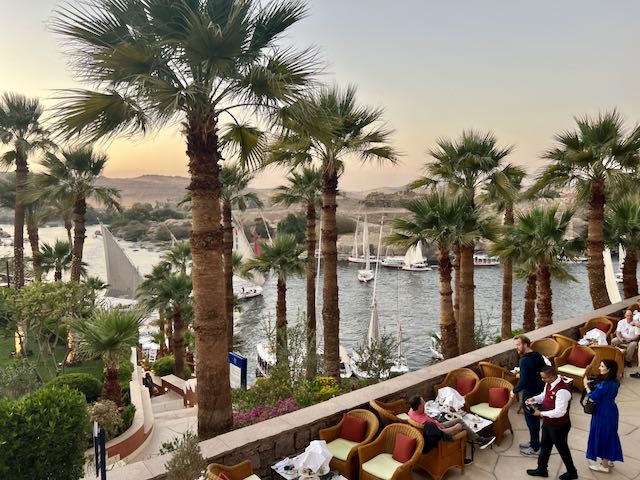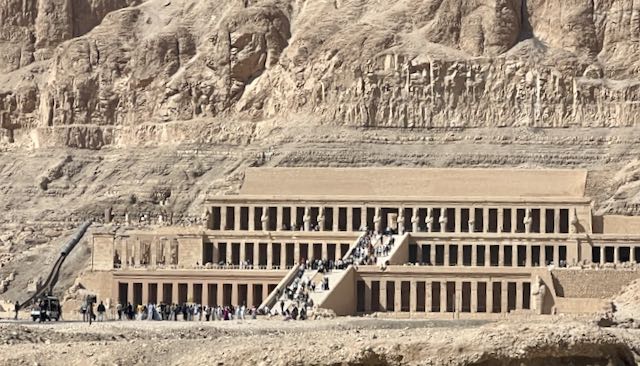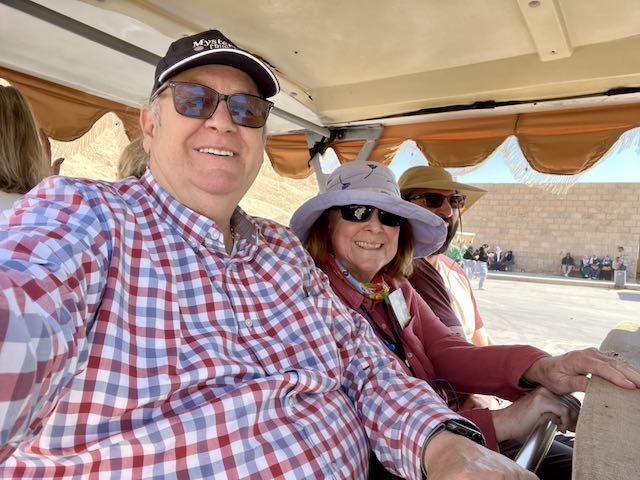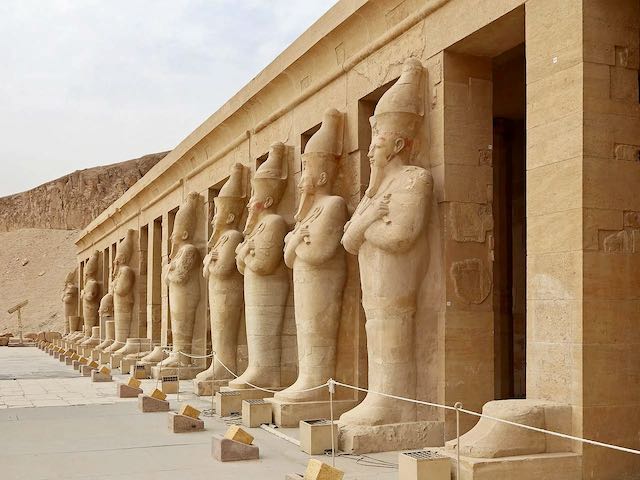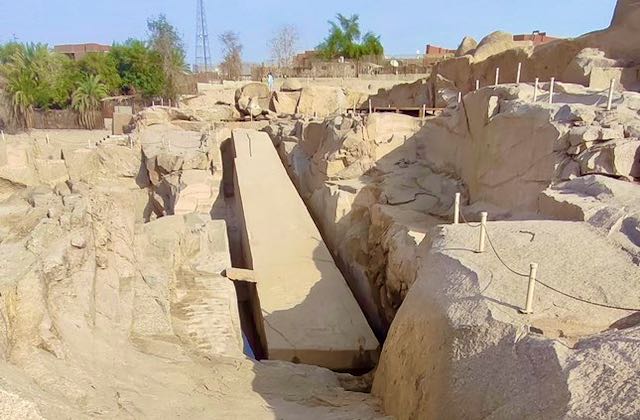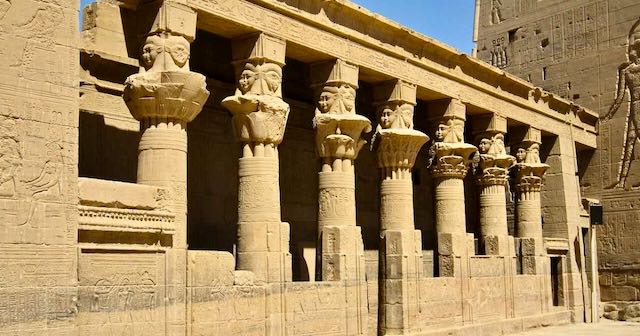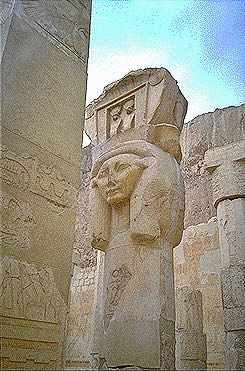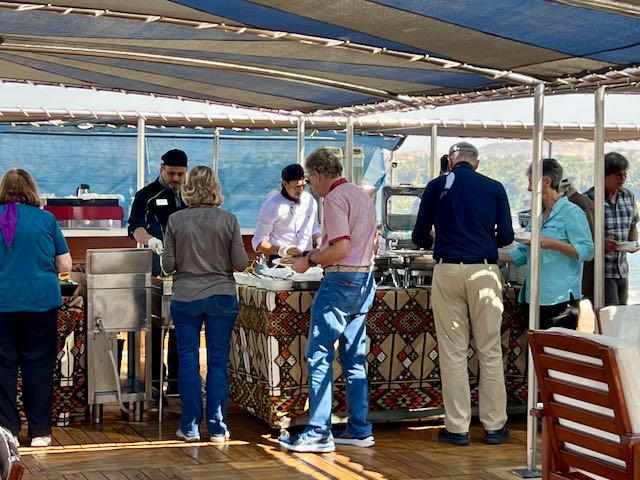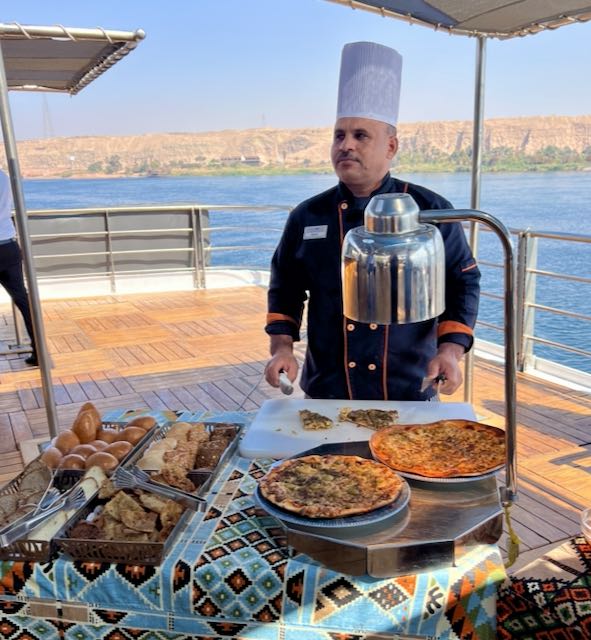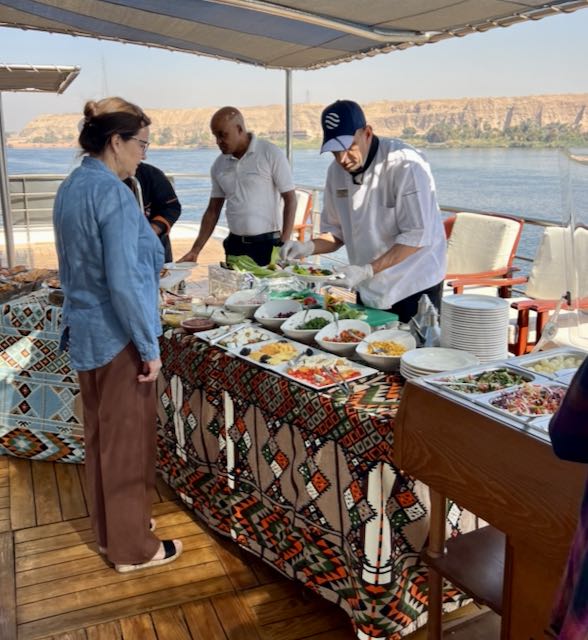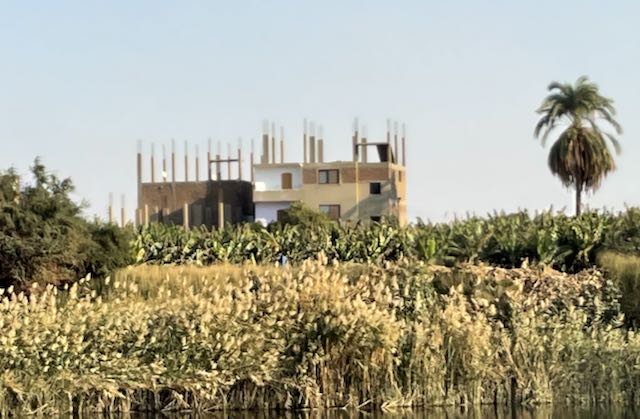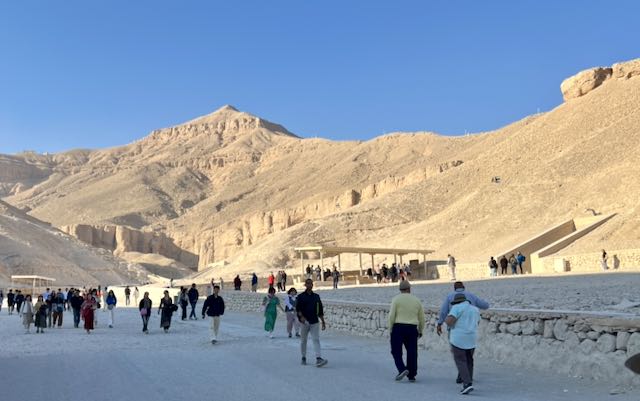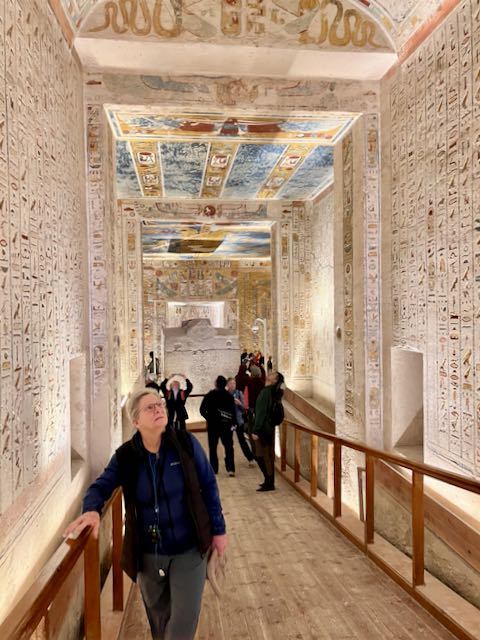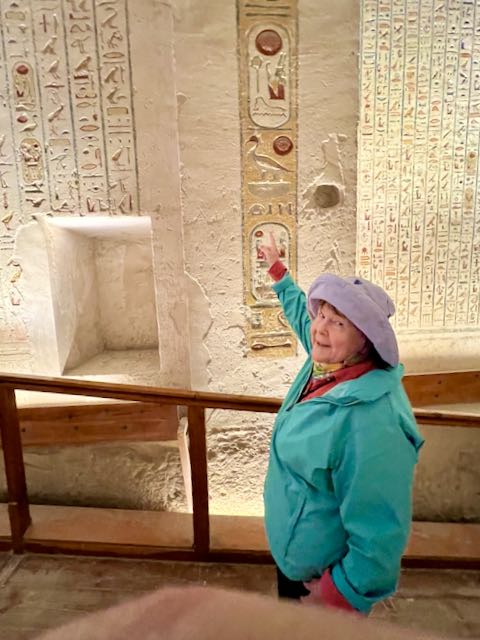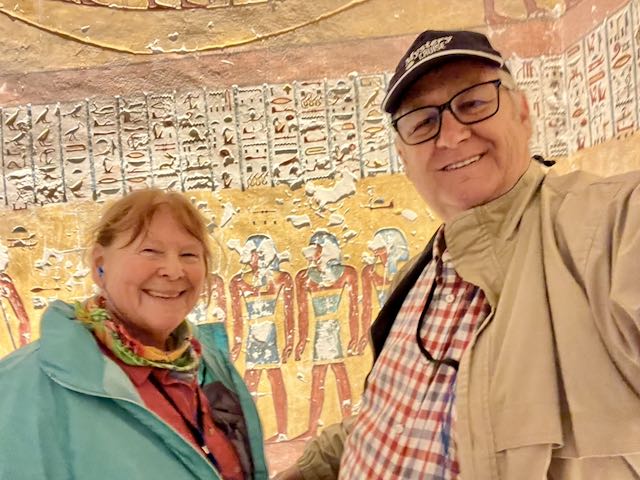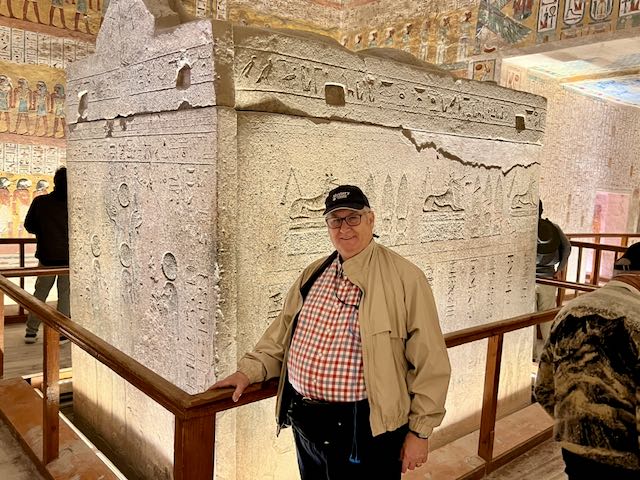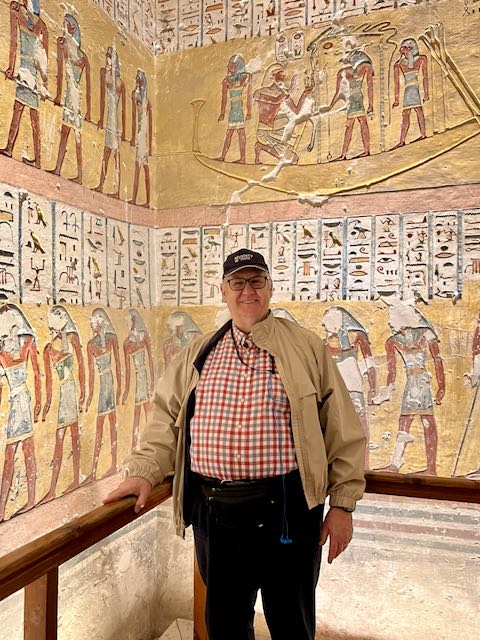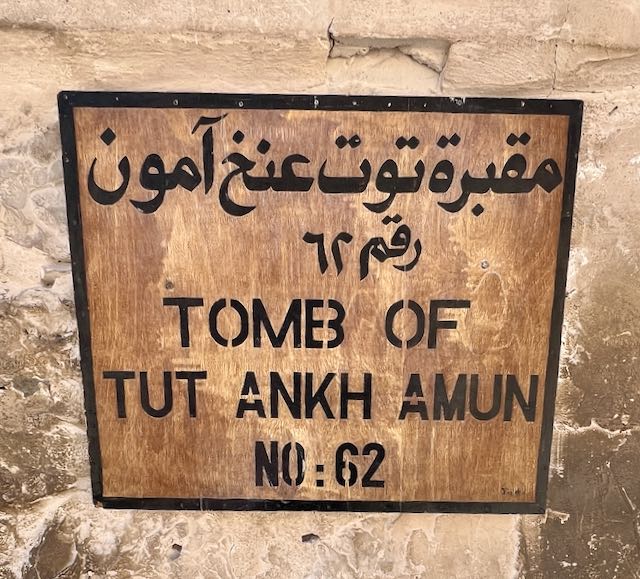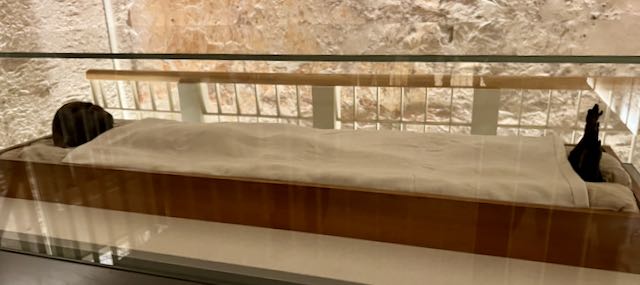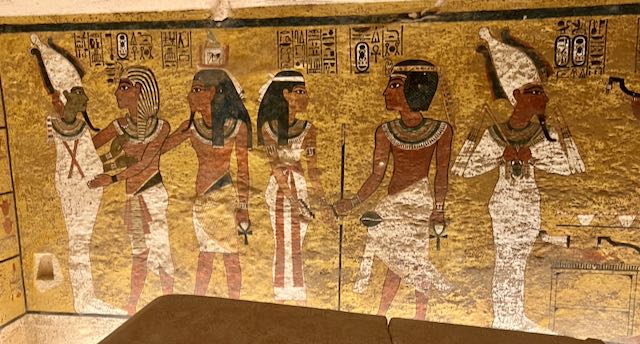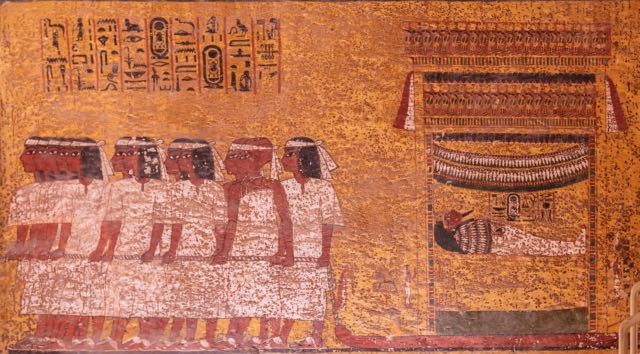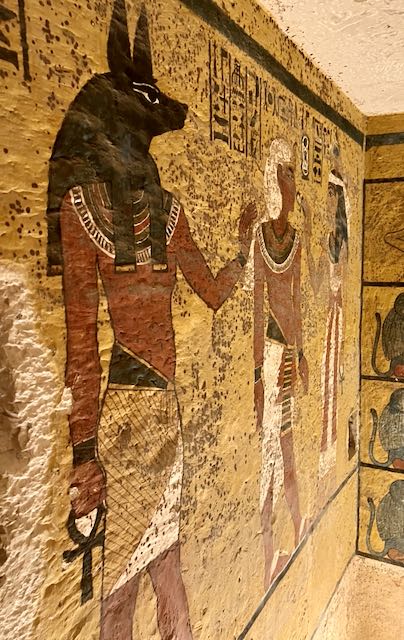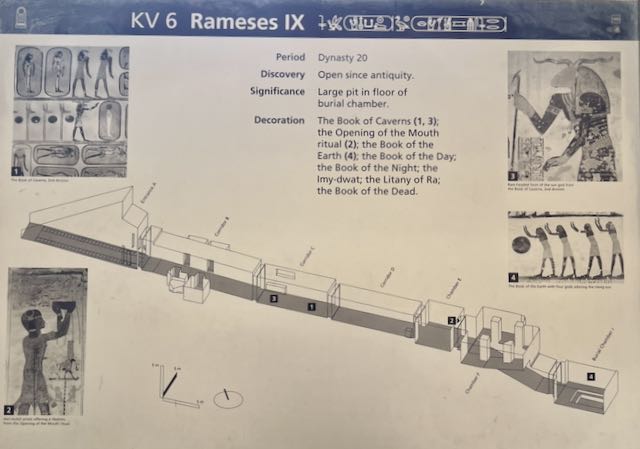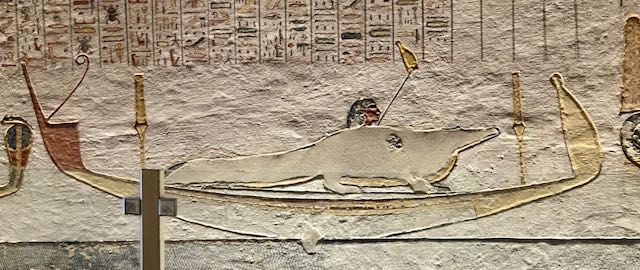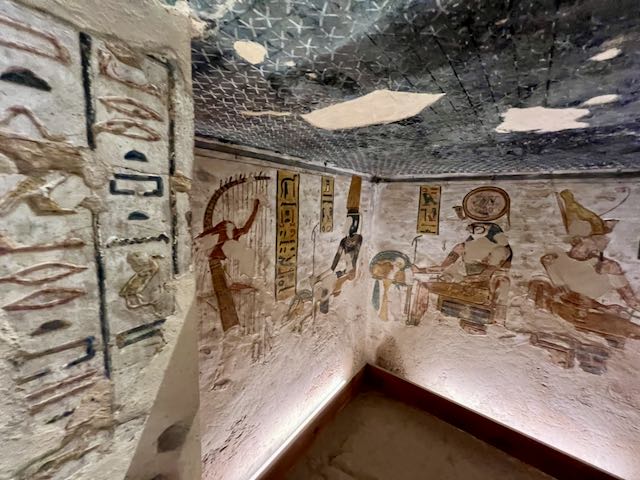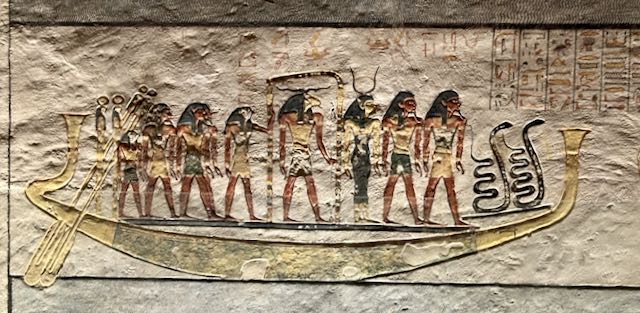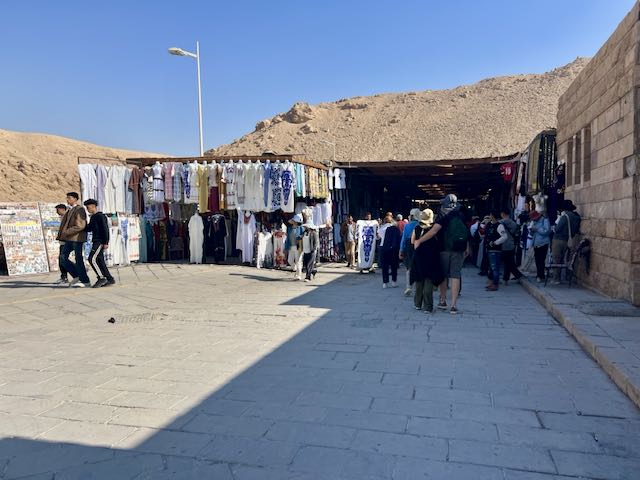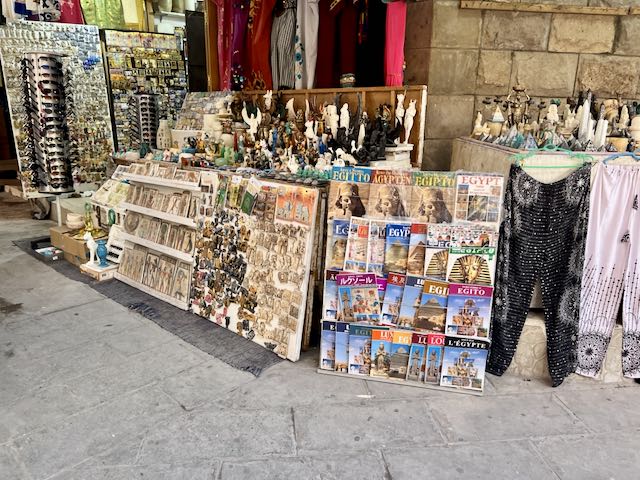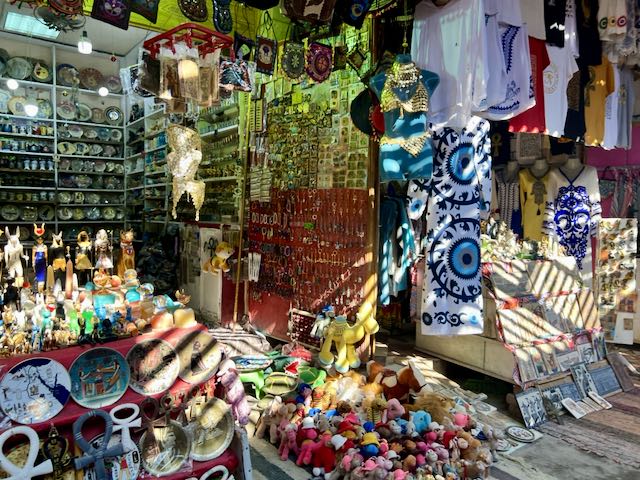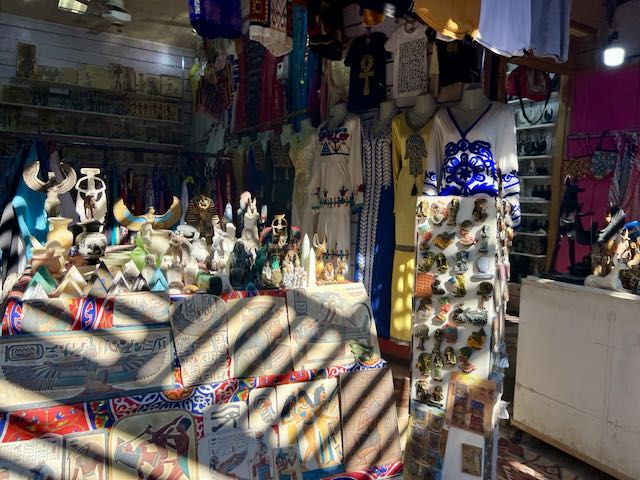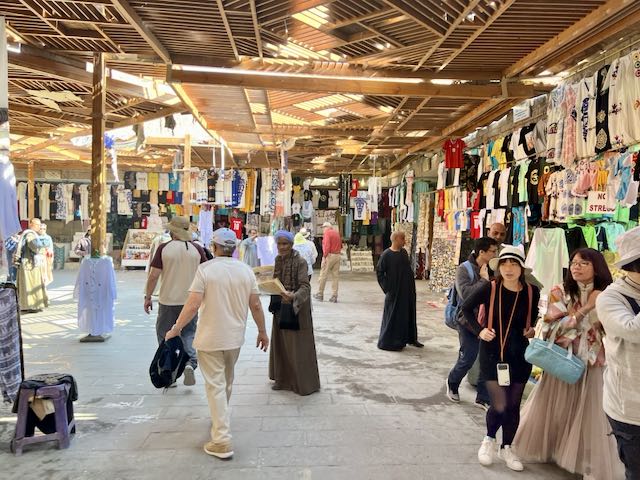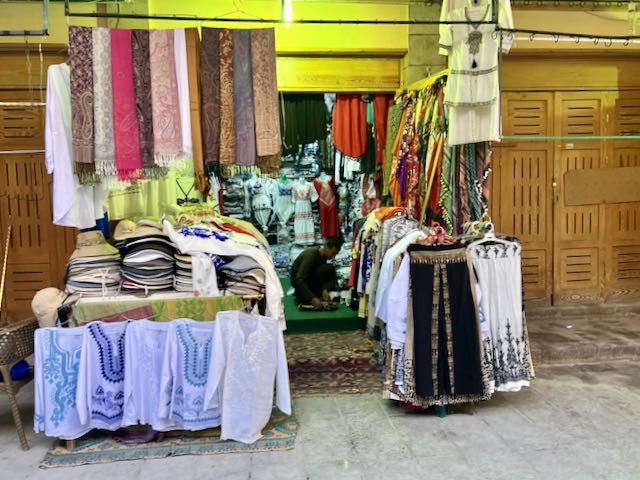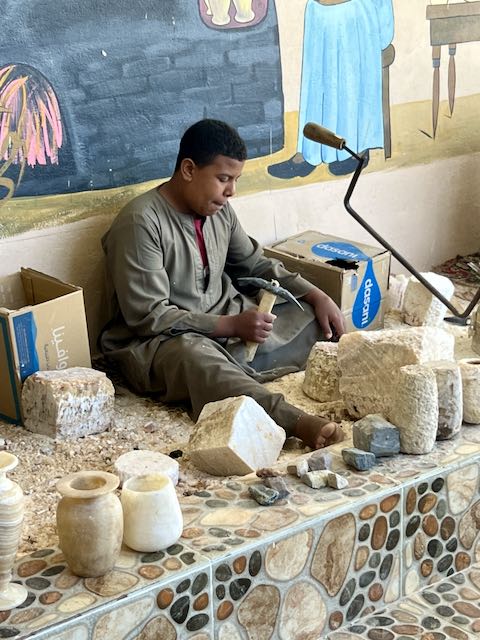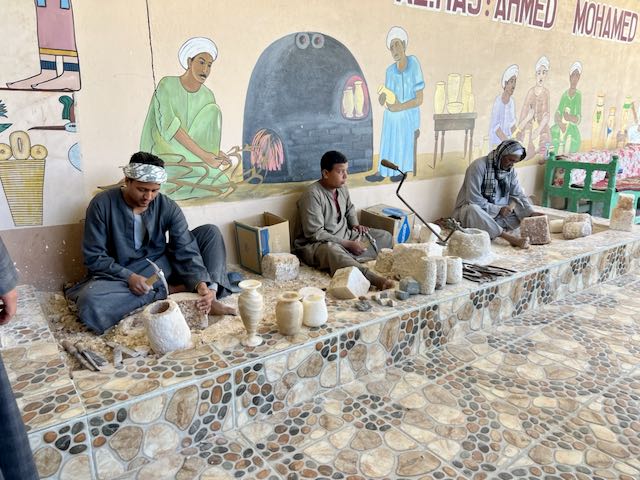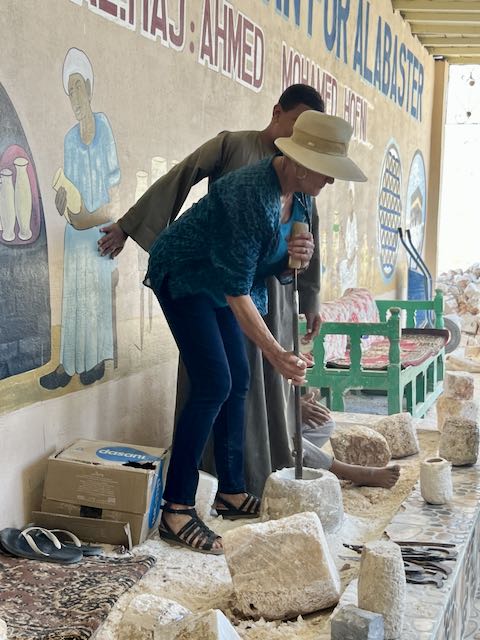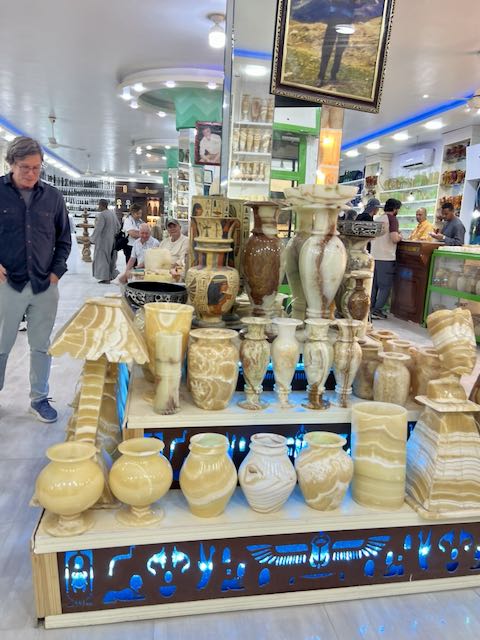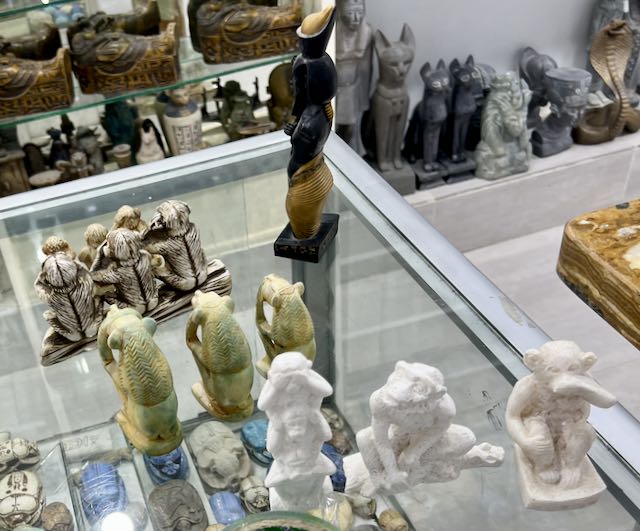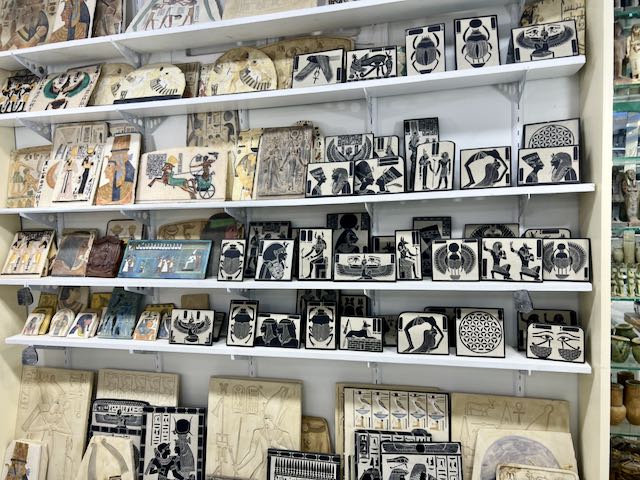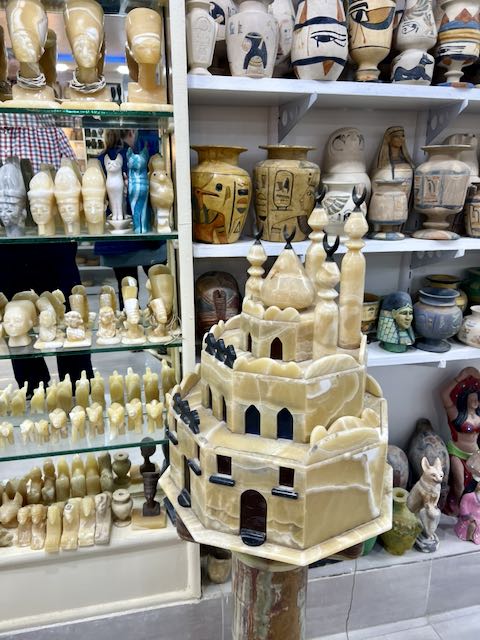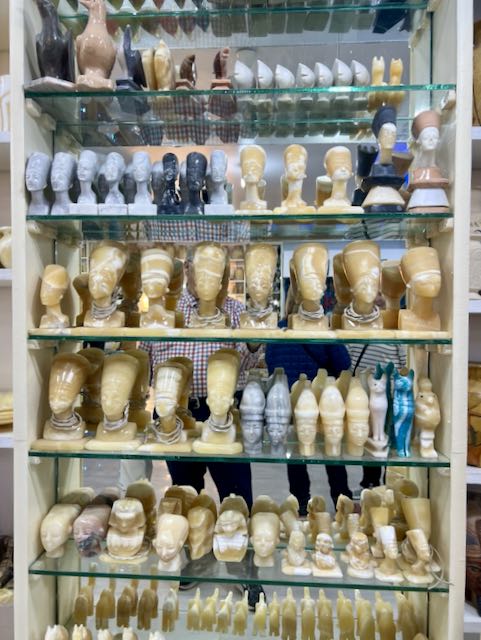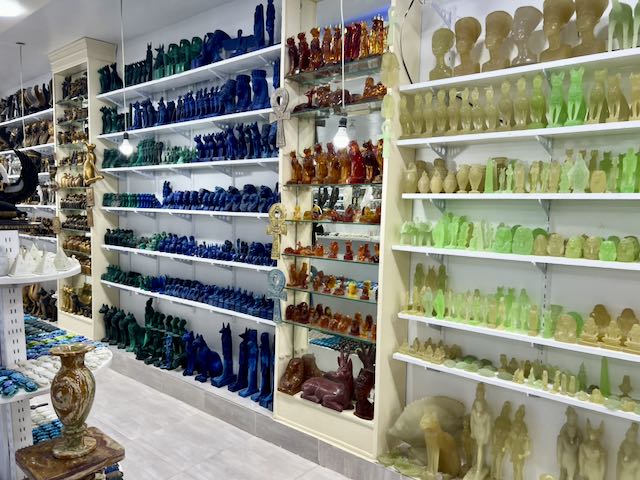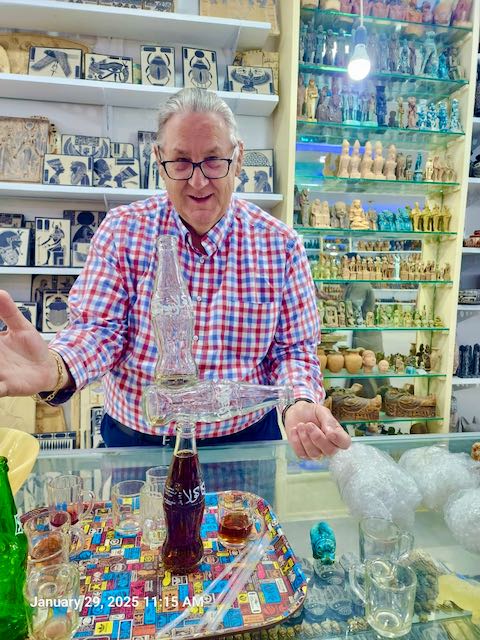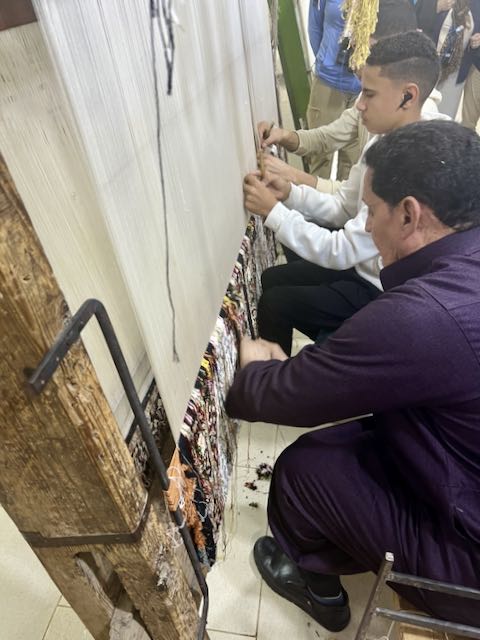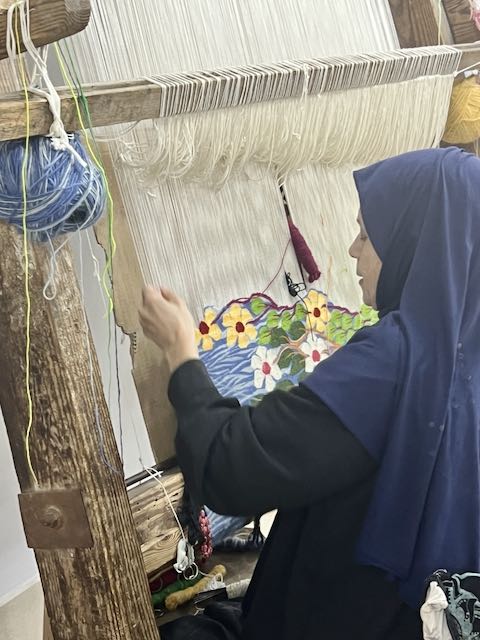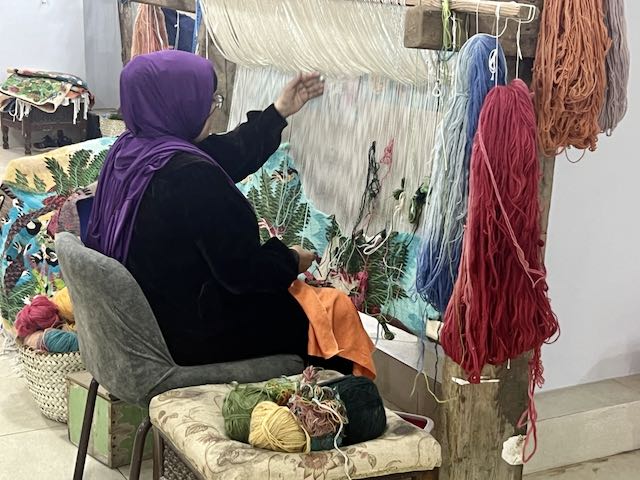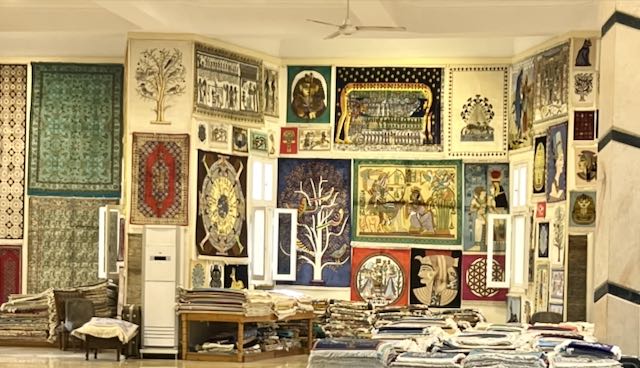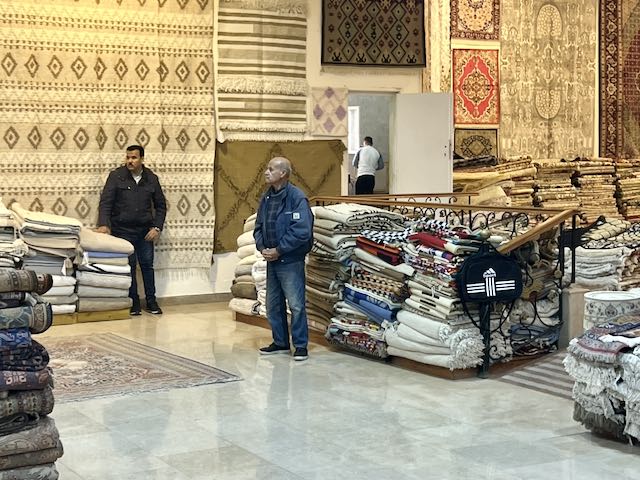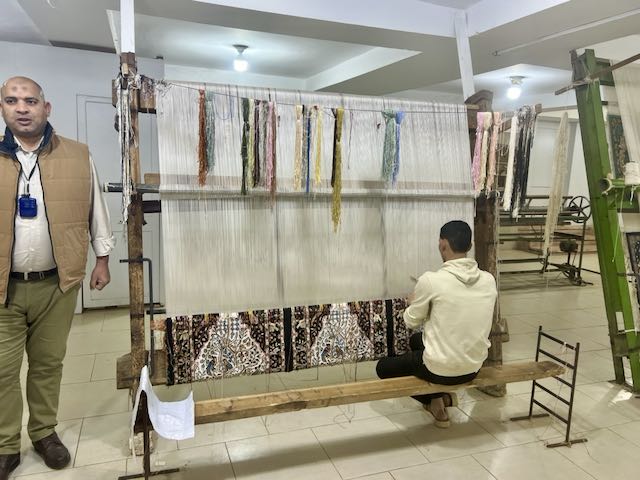Bright and early, we boarded our couch for the ride to the airport for a very quick flight to Abu Simbel to visit the temples by the Egyptian king Ramses II (reigned 1279–13 BCE).

In ancient times the area was at the southern frontier of pharaonic Egypt, facing Nubia. The four colossal statues of Ramses in front of the main temple are spectacular examples of ancient Egyptian art. By means of a complex engineering feat in the 1960s, the temples were salvaged from the rising waters of the Nile River caused by erection of the Aswan High Dam. It seems almost unbelievable that these massive structures could be moved to high ground, but it is fantastic that this was accomplished.
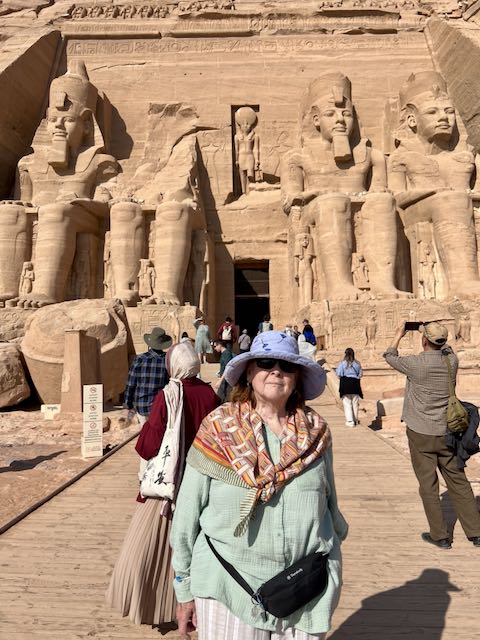
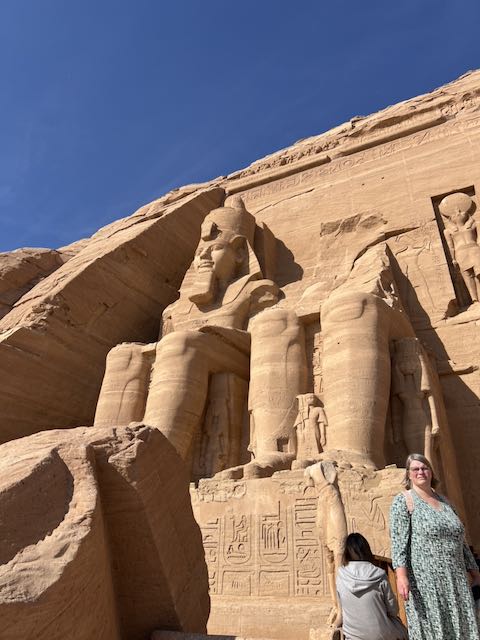

Carved out of a sandstone cliff on the west bank of the Nile, the temples were unknown to the outside world until their rediscovery in 1813. The 66-foot seated figures of Ramses are set against the recessed face of the cliff, two on either side of the entrance to the main temple. Carved around their feet are small figures representing Ramses’ children, his queen, Nefertari, and his mother, Muttuy. Graffiti inscribed on the southern pair by Greek mercenaries serving Egypt in the 6th century BCE have provided important evidence of the early history of the Greek alphabet.


The temple itself, dedicated to the sun gods Amon-Re and Re-Horakhte, consists of three consecutive halls extending 185 feet into the cliff, decorated with more Osiride statues (An Osiride statue is a standing statue of a pharaoh in the form of a mummy, with its back leaning against a wall or a column) of the king and with painted scenes of his purported victory at the Battle of Kadesh.
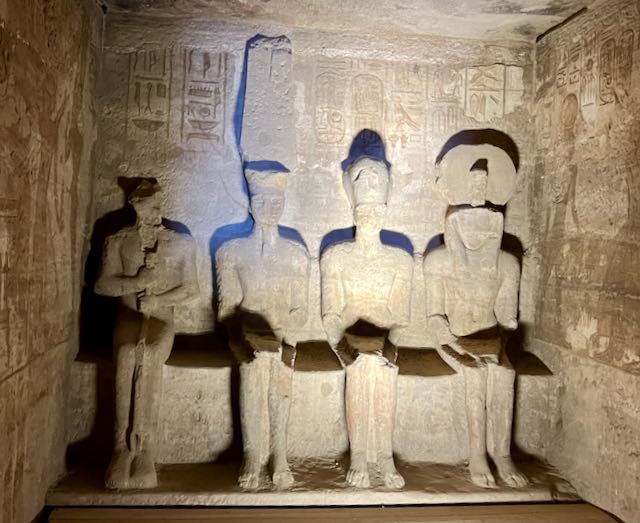

Amun Ra, Ra Horakhty, Ptah, and a deified version of Ramesses II in the innermost chamber
On two days of the year (about February 22 and October 22), the first rays of the morning sun penetrate the whole length of the temple and illuminate the shrine in its innermost sanctuary. During the relocation, every attempt was made to position the opening so the light would continue to enter the temple – and they were successful!
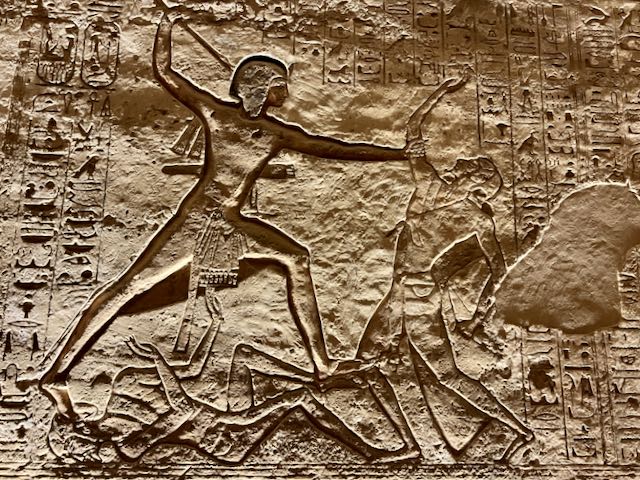
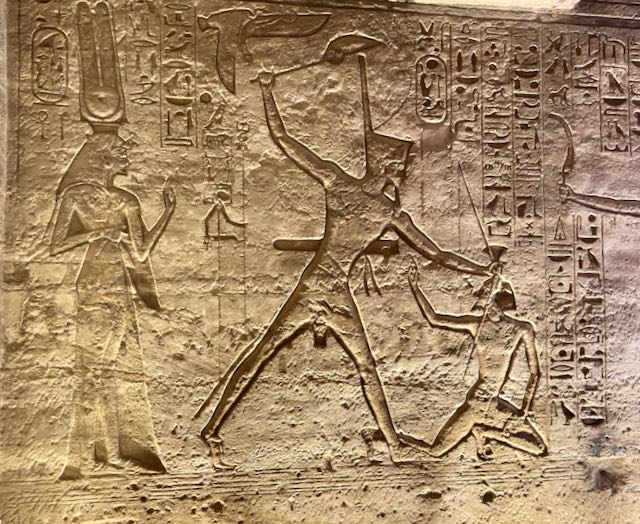
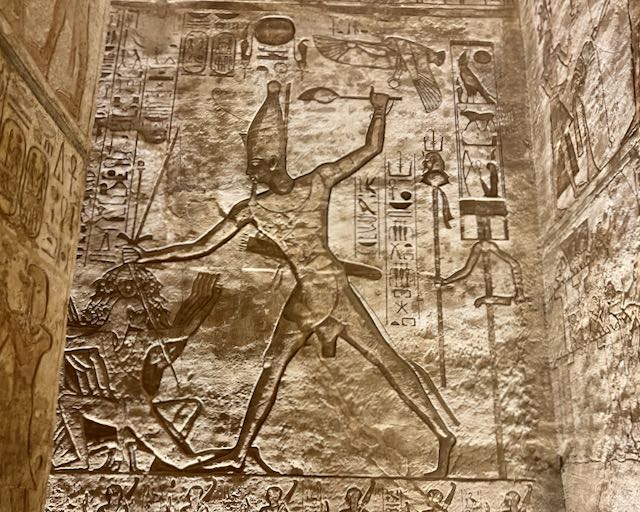
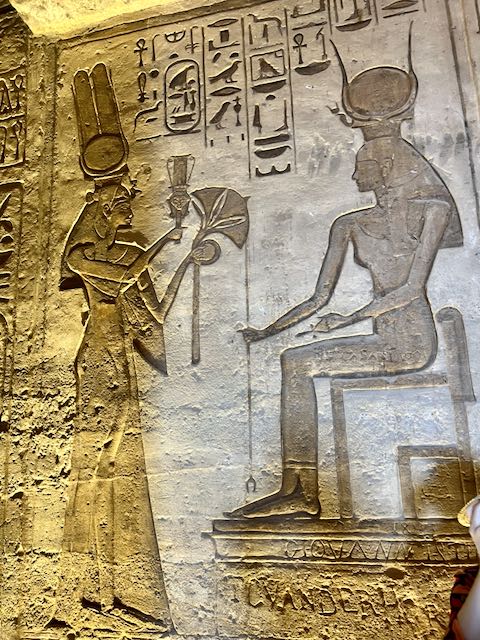
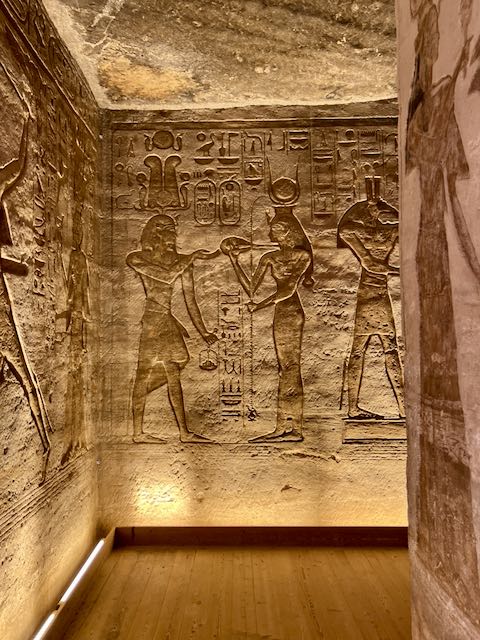
All of these engravings tell stories. I wish I could have recorded all the descriptions we were given by our Egyptologist so I could share them with you.
Just to the north of the main temple is a smaller one, dedicated to Nefertari for the worship of the goddess Hathor and adorned with 35-foot statues of the king and queen. The temple is known for its elaborate decoration, detailed depictions of ancient gods, mystifying hieroglyphs, and stunning astronomical ceiling paintings. The temple was dedicated to the goddess Hathor, who was worshipped as the goddess of love, fertility and music.

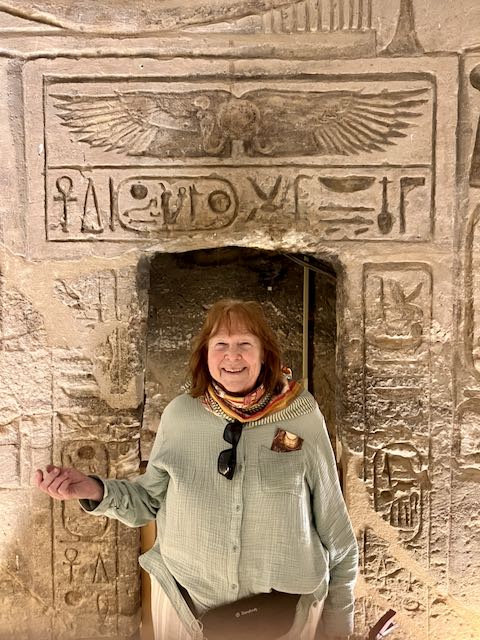
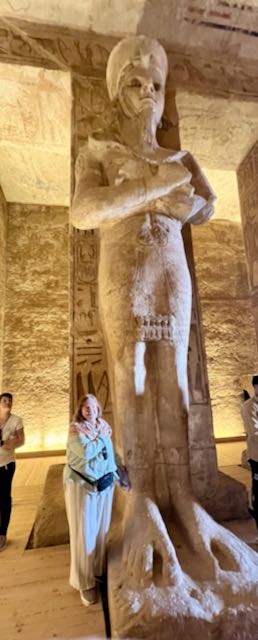
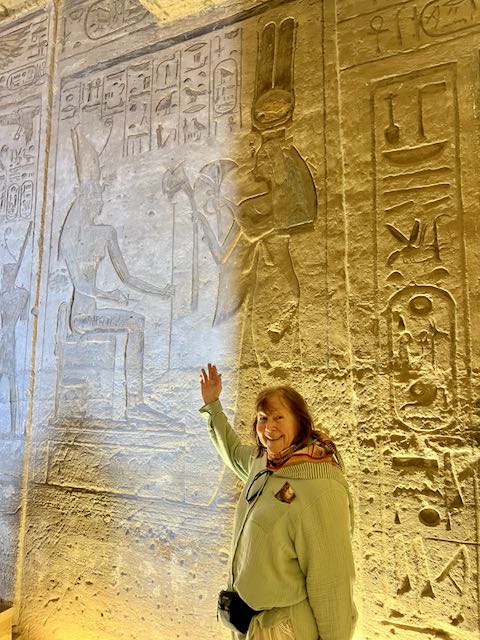
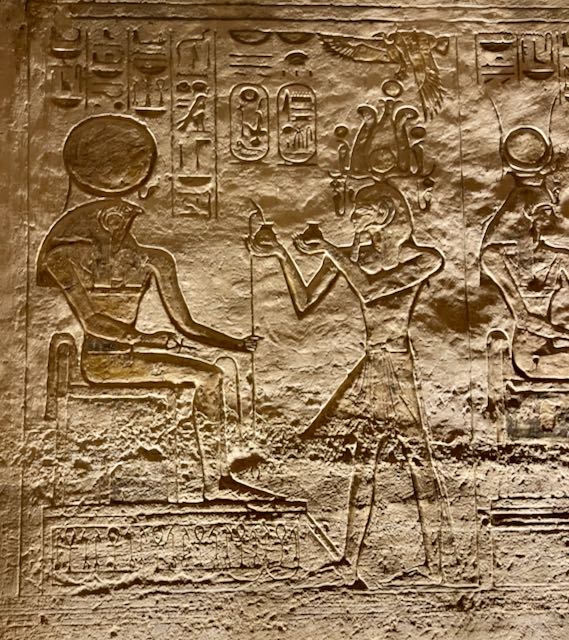
In the mid-20th century, when the reservoir that was created by the construction of the nearby Aswan High Dam threatened to submerge Abu Simbel, UNESCO and the Egyptian government sponsored a project to save the site. Between 1963 and 1968 a workforce and an international team of engineers and scientists, supported by funds from more than 50 countries, dug away the top of the cliff and completely disassembled both temples, reconstructing them on high ground more than 200 feet above their previous site. In all, some 16,000 blocks were moved. Two “mountains” were constructed over the temples to represent the original appearance of the temple which was carved into the mountain rather than built up from the ground.
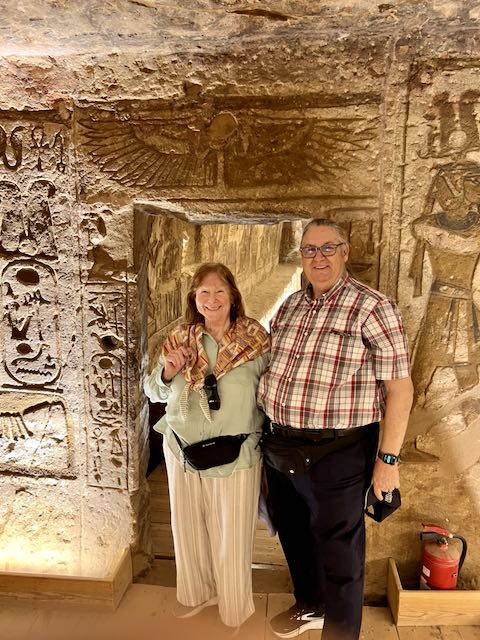
Back to the airport and return flight to board our ship. Truly a memorable day and one I’m pleased we did not miss this special place.
Back on the ship we had an evening of entertainment. The Nubian civilization flourished in the region between Aswan and Khartoum, developing a unique cultural identity encompassing language, traditions, beliefs, customs, and folklore. Following the construction of the Aswan High Dam, necessitating relocation, the Nubian people have preserved their distinctive musical and dance traditions. A troupe of Nubian performers presented an evening’s entertainment aboard the cruise vessel.
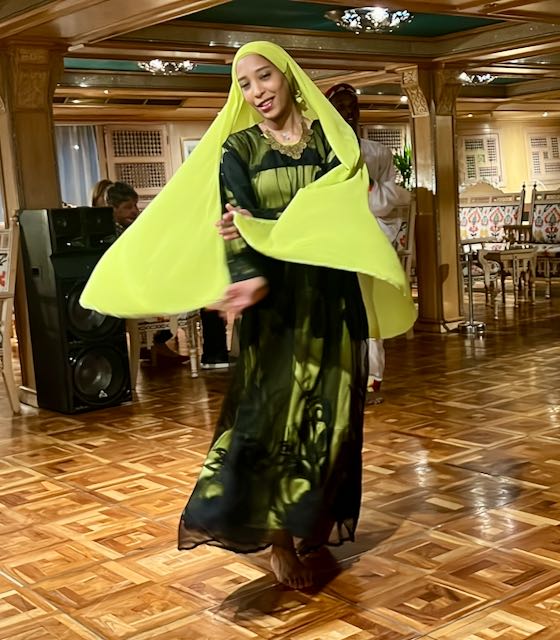



Everyone got into the act and had a wonderful time aboard the S.S. Sphinx in the bar lounge.
